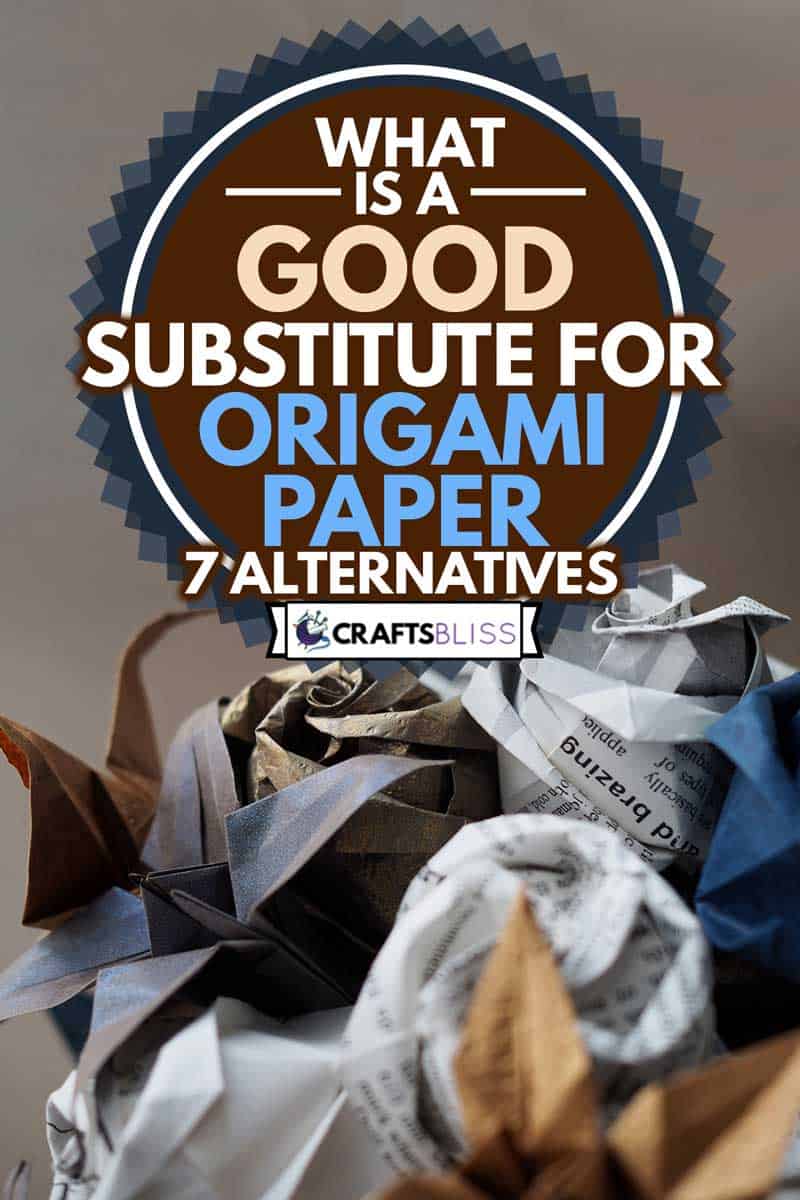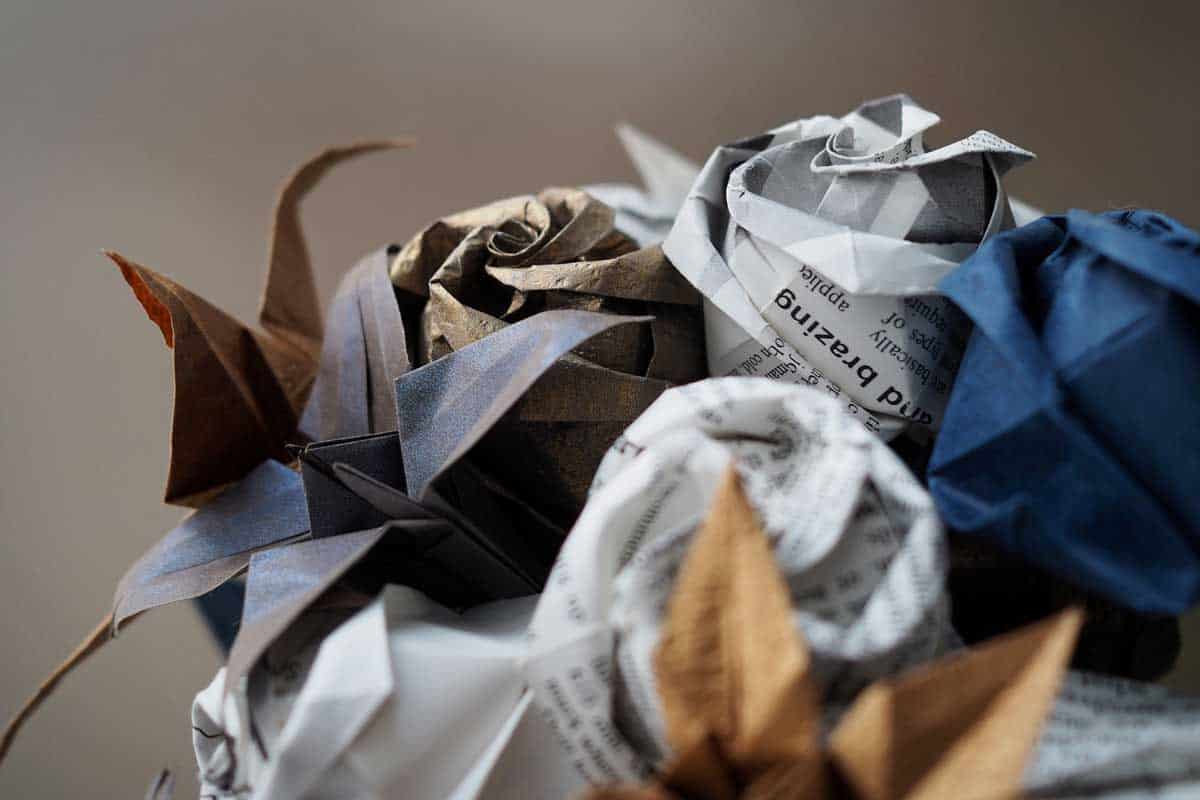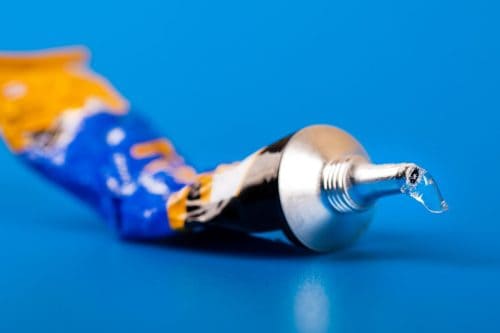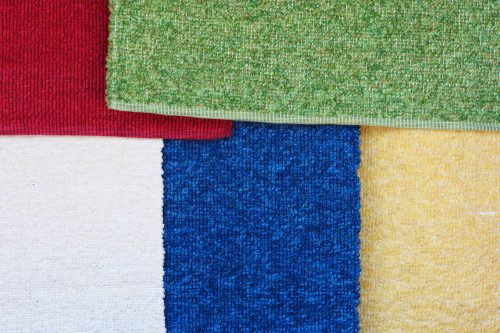Creating origami models is a lot of fun and has been practiced for centuries. But what do you do if you don't have any origami paper? Not to worry, we researched different substitutes for origami paper that prove great results.
A quality substitute for origami paper should be lightweight, easy to bend, fold, and display structural integrity—various origami paper ranges in price and aesthetic appeal. However, you can use the following materials in a pinch in place of origami paper:
- Book pages
- Copy paper
- Currency
- Gift wrapping paper
- Junk mail flyer
- Kraft paper
- Newspaper
Read on to learn about alternatives for origami paper. Transform the art of folding origami figures when you use different types of paper. We'll also teach you how to make your origami stand out with these materials and suggest some craft ideas to try.

The Art of Paper Craft
The traditional practice of origami dates back to Japan's Edo period and is synonymous with Japanese culture. However, today's modern origami enthusiasts can look beyond Washi paper to create fantastic paper models. Crafters have successfully created origami using paper currency, foil paper, and handmade artisan papers, among other materials. Check out the following substitutes that we've found for traditional origami paper:
Book Pages
Give your origami model a literary touch when you use an upcycled book page from your favorite novel. Scour rummage sales, flea markets, or thrift stores for old books. You may have to cut the pages into a square shape before folding it into origami, but the visual results are fascinating. If the paper is not fragile, it is thin enough to fold, crease, and bend into shape without crumbling. Plus, you can entertain yourself with lines of text or graphics in a new form of presentation.
Check out this vintage looking paper on Amazon.
Copy Paper
One of the cheapest alternatives to packs of origami paper is to use copy paper. Copy paper is lightweight, sturdy, and available as standard white, pastel, or solid colors on both sides. Creating simple origami models with copy paper is easy, but similar to a book page, it won't have a sharp visual contrast like Chiyogami or Washi paper.
Check out this copy paper on Amazon.
Currency
Paper currency like dollar bills can be easily folded into select origami designs. The concept of moneygami or folding paper money into clever figures like elephants, bow ties, t-shirts, and boxes is now a popular and unique art form. Most bills are flexible and durable enough to be folded into semi-complex models since they are a composite of paper and fabric.
Check out this set of faux currency bills on Amazon.
Gift Wrapping Paper
Gift wrapping paper with foil on one side and graphic design on the other is a visually appealing origami paper substitute. Some models are complex, and the contrasting sides of gift wrapping paper will make it easier to follow the instructions. Be mindful of the weight difference and texture of varying wrapping paper. It can be distracting when the paper has a high sheen, making it challenging to fold, or the texture makes bending difficult after multiple layers.
Check out this reversible wrapping paper on Amazon.
Junk Mail Flyer
Instead of throwing away those pesky junk mail flyers, consider folding it into origami. Some models are not a good match for this paper because it is usually stiff and thicker than origami paper. However, you can make simple models like a jumping frog, a heart, or a boat using a flyer. Be prepared to use some elbow grease to get a flyer to bend or fold into place.
Kraft Paper
Kraft paper is a little thicker than copy paper but thinner than a junk mail flyer. Making origami using kraft paper is an inexpensive solution that is as malleable as gift wrapping paper. One drawback is that kraft paper is pretty bland like copy paper and doesn't have two contrasting sides. Making simple and complex models with this type of paper is easy to achieve.
Check out this value kraft paper on Amazon.
Newspaper
When in a pinch, you can upcycle newspaper or newsprint into origami figures. However, this paper tends to be on the flimsy side, so it is best to work small. Try your hand at folding newspaper into a simple boat, hat, or paper cup. Making a crane is possible, but it might not hold up too well over time.
Check out this newspaper themed paper on Amazon.
What Are Some Easy Origami Figures to Make?
Creating paper cranes from ornate origami paper is a signature example of Japanese paper folding. However, did you know you can create simple figures to get acquainted with basic folds needed to create more complex origami? Check out the following example that you can fold with any origami paper alternative.
Create a penguin using a square of paper
For this model, you can add design to one side of the paper for contrast, especially using kraft paper or copy paper. You'll then want to start the model with the lighter side (or plain side) facing down. With the paper in a diamond orientation, put the bottommost point toward you and follow these steps for your penguin:
- Fold the bottom point up to the topmost point and make a crease. The paper should look like a triangle.
- Fold the leftmost point to the top and make a crease. Return the point to the original position.
- Take the topmost point of the paper and fold the paper down to the left, so that the point touches the crease made from step 4. The other side of this fold should make a sharp point at the bottom right. It should like an airplane.
- Flip the paper over and bring the other topmost point to the crease, so both sides mirror one another. Keep folds sharp and neat.
- Open the paper, so the folded sides face down, and you have a solid diamond shape facing up. Take the paper's bottom point and fold it, so it fits neatly into the visible creases that look like a smaller diamond. It's the tail of the penguin.
- Bring the sides of the paper together, so the tail is hidden. You should see a sharp triangular point at the top.
- Fold the topmost point on an angle and to the right, forming the head, and make a crease. Return the point to its original position.
- Slightly open the side where the tail is folded. Bring the sharp triangular point at the top down and to the right, folding it, so it lines up with the creases you made in step 9. You are making the head. Close the side with the tail as you fold the point.
You are done!
How Thick Should Origami Paper Be?

Most traditional origami paper is handmade and has a thickness of 20 to 50 gsm. Ideally, any substitute for origami paper should match that range of thickness to fold designs. Different origami paper types may vary in their texture and thickness based on their fiber and type, including washi and chiyogami paper.
How Heavy Should Substitute Origami Paper Be?
Any paper you use to substitute origami paper should be somewhat light and easy to fold. Keep in mind that Kami, a suitable origami paper for beginners, is thin and weighs 60 to 63 gsm. The paper used to fold origami should be easy to bend into shapes yet hold its form when the model is complete.
Summary

Origami paper has been used for centuries to create simple and elaborate figures. When origami paper is not readily available, you can use a host of clever substitutes to create origami. Depending on what you wish to achieve, you want to use a lightweight material and is easy to manipulate into folds and bends. Some of the most inexpensive origami paper substitutes include copy paper, wrapping paper, and paper currency.












